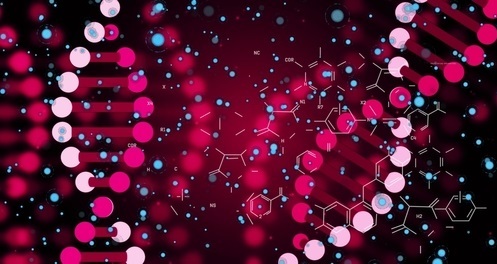
 Data Structure
Data Structure Networking
Networking RDBMS
RDBMS Operating System
Operating System Java
Java MS Excel
MS Excel iOS
iOS HTML
HTML CSS
CSS Android
Android Python
Python C Programming
C Programming C++
C++ C#
C# MongoDB
MongoDB MySQL
MySQL Javascript
Javascript PHP
PHP
- Selected Reading
- UPSC IAS Exams Notes
- Developer's Best Practices
- Questions and Answers
- Effective Resume Writing
- HR Interview Questions
- Computer Glossary
- Who is Who
Yeast Artificial Chromosomes (YACs)
Introduction
Yeast artificial chromosomes (YACs) are a type of genetically engineered DNA molecule that can be used to study and manipulate genes in various organisms. These artificial chromosomes are similar in structure and function to the natural chromosomes found in yeast and other eukaryotic organisms.
YACs were first developed in the 1980s as a tool for studying human genetic diseases, but they have since been used to study a wide range of organisms, from bacteria to plants to animals. YACs are especially useful for studying large segments of DNA, including entire genes or even clusters of genes.

The Basic Structure
YAC is like that of a natural chromosome, with a centromere, telomeres, and origins of replication. The centromere is the point where the two chromatids of a chromosome are joined, and it is essential for the proper segregation of chromosomes during cell division. The telomeres are the ends of the chromosome, and they protect the DNA from degradation and fusion with other chromosomes. The origins of replication are the sites where DNA replication begins, and they are necessary for the duplication of chromosomes during cell division.
YACs are constructed by inserting a large piece of DNA into a plasmid, which is a small circular DNA molecule that is commonly used as a vector for geneti engineering. The plasmid is then introduced into yeast cells, where it can replicate and be maintained as an independent piece of DNA. The large piece of DNA contained within the plasmid can be up to several hundred kilobases in length, which is much larger than the typical size of a gene.
Advantages
YACs is that they can be used to study the function of entire genes or gene clusters, rather than just individual genes or small segments of DNA. This is because YACs can be used to introduce large pieces of DNA into cells, which can then be expressed and studied in their entirety.
This is particularly useful for studying the regulation of gene expression, as well as for identifying the functional elements within a gene, such as promoters, enhancers, and regulatory sequences.
Another advantage of YACs is that they can be used to create transgenic organisms, which are organisms that have had foreign DNA inserted into their genome.
This is particularly useful for studying the function of genes in vivo, as it allows researchers to study the effects of gene expression in the context of an entire organism.
YACs have been used to create transgenic mice, rats, and other organisms, and they have been instrumental in the study of many genetic diseases and developmental processes.
Limitations
Despite their many advantages, YACs have some limitations.
They are difficult to manipulate and maintain in the laboratory, particularly for long periods of time. YACs are also prone to genetic instability, which can lead to the loss or rearrangement of the inserted DNA over time. This can make it difficult to use YACs for long-term studies or for creating stable transgenic organisms.
Conclusion
Yeast artificial chromosomes (YACs) are a powerful tool for studying and manipulating genes in a wide range of organisms. They allow researchers to study the function of entire genes or gene clusters, and they can be used to create transgenic organisms for in vivo studies. However, YACs also have some limitations, including difficulty in manipulation and maintenance, and genetic instability. Despite these limitations, YACs remain an important tool for genetic research and are likely to continue to be used for many years to come.
FAQs
Q1. What is a yeast artificial chromosome (YAC)?
Ans. A yeast artificial chromosome is a type of artificial chromosome that is made by inserting a fragment of foreign DNA into a yeast cell. The foreign DNA is then maintained and replicated as if it were a natural chromosome within the yeast cell.
Q2. What are the applications of YACs?
Ans. YACs are used in a variety of applications, including genome mapping, cloning large DNA fragments, and studying gene regulation.
Q3. How are YACs constructed?
Ans. YACs are constructed by first isolating a large piece of foreign DNA, such as a human chromosome or a portion of a genome. This DNA is then inserted into a yeast cell using a vector that contains all the necessary components for replication and maintenance. The yeast cell then replicates the foreign DNA along with its own chromosomes.
Q4. How are YACs different from other types of artificial chromosomees?
Ans. YACs are unique because they can maintain and replicate large fragments of foreign DNA, up to several hundred kilobases in size, and because they behave similarly to natural chromosomes within a cell. Other types of artificial chromosomes, such as bacterial artificial chromosomes (BACs) and P1 artificial chromosomes (PACs), have limitations on the size of DNA fragments they can maintain.
Q5. What are the advantages of using YACs in genetic research?
Ans. YACs offer several advantages over other methods of genetic research, including the ability to maintain large DNA fragments, the ability to study gene regulation and chromosome structure, and the ability to create transgenic animals that carry the foreign DNA fragment.

